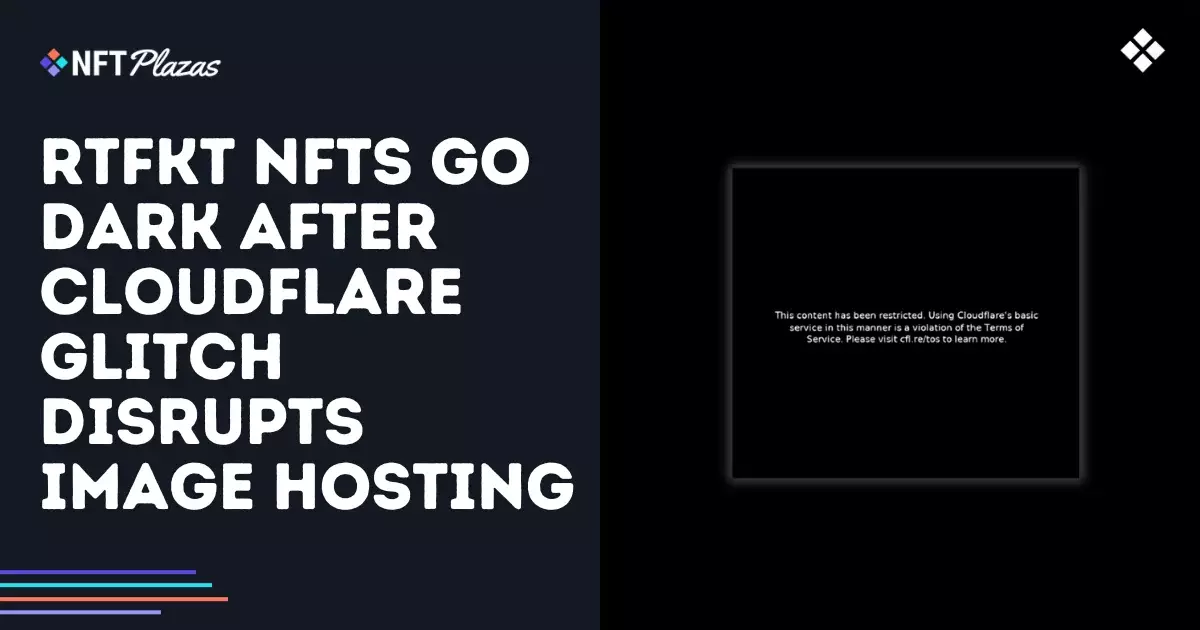In a world where digital assets are touted as the future of ownership, the recent debacle involving the Ethereum NFT collections Clone X and Animus serves as a glaring reminder of the potential pitfalls that loom in the shadows of this brave new digital realm. The incident, which saw collectors confronted with blank screens and alarming messages about terms of service violations, raises serious questions about the reliability of the systems that underpin these highly valued assets. The event underscores the fragility of what many perceive to be secure investments, highlighting that true ownership in a digital landscape is still tethered to centralized services that can fail without warning.
Centrally Controlled Chaos
The disappearance of image assets from these NFT collections wasn’t simply a random glitch; it was a consequence of relying on centralized hosting platforms like Cloudflare. Following the downgrading of their account, the files were rendered inaccessible, leading to a cacophony of frustration among collectors who were suddenly stripped of access to their digital possessions. It is astounding that in an era championing decentralization, many NFT projects still find themselves chained to conventional web hosting infrastructure. This incident might be seen not just as a technical failure but as a profound narrative about our ongoing struggle to balance innovation with reliability in blockchain technologies.
The Need for Decentralized Solutions
As RTFKT, the studio behind Clone X and Animus, worked tirelessly to rectify the situation, a brighter path emerged: migration to Arweave, a decentralized storage solution. Samuel Cardillo, the former Head of Technology at RTFKT, highlighted this key strategic shift as a proactive measure to eliminate reliance on third-party platforms that are vulnerable to service interruptions. The decision to invest approximately $2,800 into a system designed to offer permanent storage represents a critical pivot for NFT owners. It signals a recognition that the future of digital assets relies on robust infrastructures that secure not just tokens, but all associated media.
Pros and Cons of Digital Assets
This incident also opens up a broader debate surrounding the pros and cons of digital ownership. On one hand, NFTs herald a revolutionary approach to ownership and value in the digital age, but their dependence on external service providers reveals a critical flaw. While true ownership epitomizes freedom, any disruption in access illustrates how such freedom can quickly become an illusion when stakeholders are not adequately empowered. The Clone X and Animus situation serves as an important verification of the risks taken by collectors and a reminder that vigilance in this space is paramount.
The Path Forward: Embracing Resilience
Moving forward, the collectibles market must innovate and evolve to build resilience within the ecosystem. The transition to decentralized storage solutions is not just optional; it should be mandatory for any serious NFT collection. Eliminating the risks attached to centralized hosting is not just beneficial—it is essential for nurturing trust among collectors and investors. As this space becomes increasingly mainstream, those involved must prioritize technological reliability and secure infrastructures that fortify their holdings against unforeseen disruptions. The future of NFTs will only be as strong as the technologies that support them, and it is high time to learn these painful lessons from 2024.
















Leave a Reply